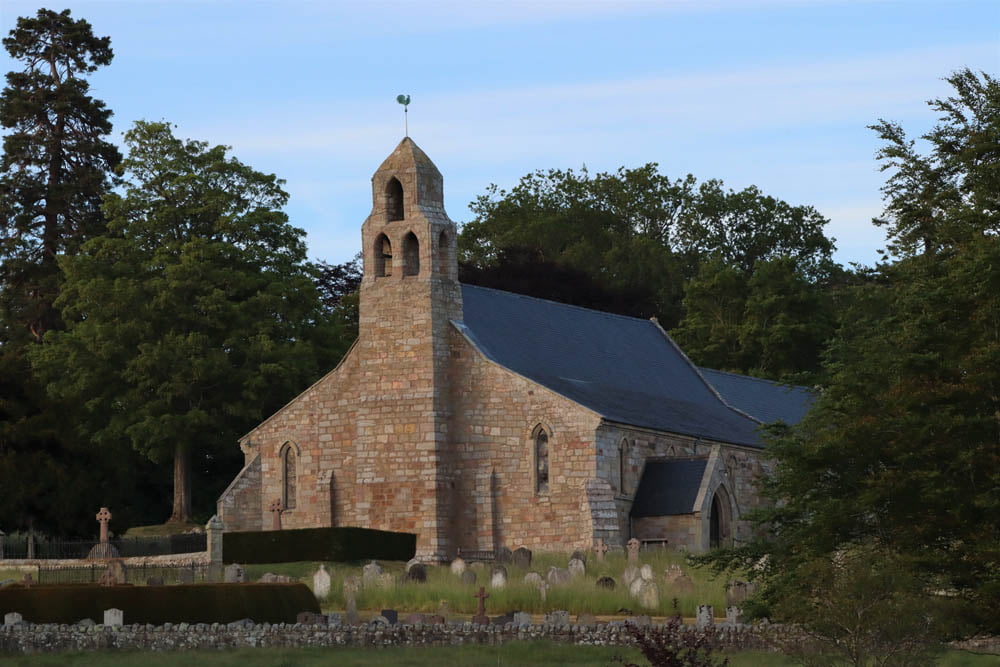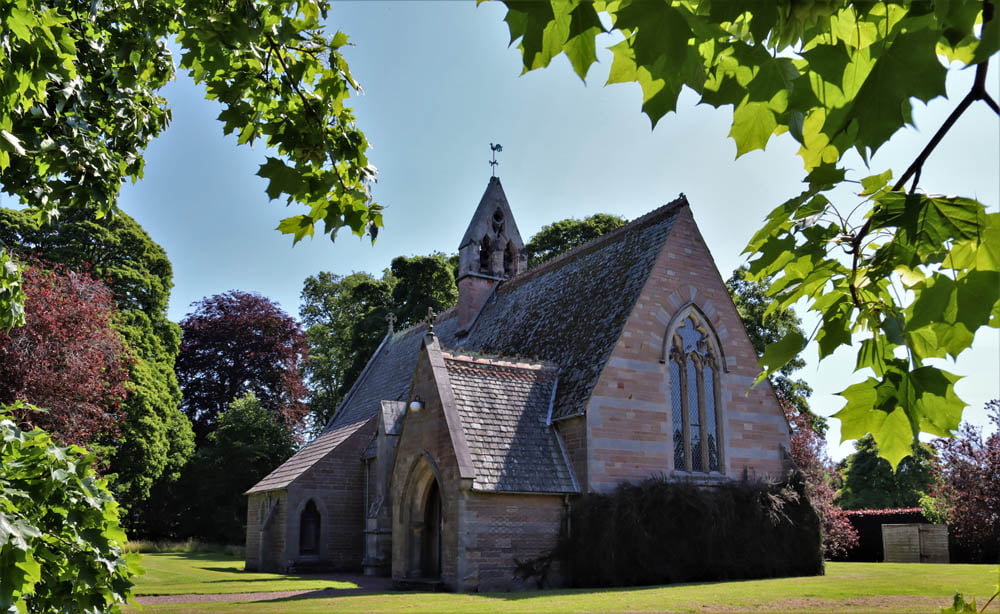
Standing in the grounds of picturesque Ford Castle, there has been a house of worship on this site since the early-13th century, although most of current building has been heavily restored. The original features include the west wall, the south aisle and the chancel, where you will find several medieval graves. Take a close look at these engravings for clues to the trade of the deceased.
James IV of Scotland made Ford Castle his headquarters for four days prior to the Battle of Flodden, 9th September, 1513. It is highly likely that he prayed at this church before travelling to Branxton Hill for the calamitous battle that resulted in the slaying of 10,000 of his men and his own death, the last time a British monarch would fall in battle.
Extensive restoration took place in 1853, under the watchful eye of renowned Newcastle architect John Dobson. Louisa, Lady Waterford, financed the project. On Lady Waterford’s death in 1891, over 160 villagers contributed to the construction of a stone screen in her memory. Lady Waterford’s grave, which can be seen in the churchyard, was designed by her good friend, George Frederic Watts OM RA, an esteemed British painter and sculptor.

There has been a church at this site since the 12th century. It is said that the dedication should be to St. Paulinus who brought Christianity to the Glendale area in the 7th century rather than to St. Paul.
The current church dates to 1849, and little is known about its history before this time of rebuilding by Durham architects Bonomi and Cory. Age can still be seen, however, in the 12th-century chancel arch.
St. Paul’s played a significant role in the aftermath of the Battle of Flodden. Acting as a temporary mortuary, the bodies of King James IV and many of his slain nobles were brought here after the fighting. Today, the church sends out a message of reconciliation – be sure to take a closer look at the ‘Go in Peace’ Flodden memorial doors.

The village of Etal was originally served by a medieval chapel on the banks of the river Till, built on the orders of Sir Robert Manners of Etal Castle in 1345. However, this chapel had fallen into ruin long before the 19th century.
St. Mary the Virgin was built in 1856-58 and was designed by the famous ecclesiastical architect William Butterfield. It was commissioned by the then resident of Etal Manor, Lady Augusta FitzClarence (née Boyle), on the death of her husband Lord Frederick FitzClarence (the illegitimate son of the Duke of Clarence, later King William IV), who had been serving as Commander-in-Chief of the army in India.
It was only on Lady Augusta’s own death in 1876 that St. Mary the Virgin served its original purpose as a resting place for Lord Frederick, who was disinterred from Ford Church, Lady Augusta and their only daughter.
Nearby, you can see the FitzClarence Gates which were also commissioned by Lady Augusta – this time intended as a surprise for her husband on his return from India. However, Lord Frederick would never see them as he sadly died before he could travel back in 1854.
switch website